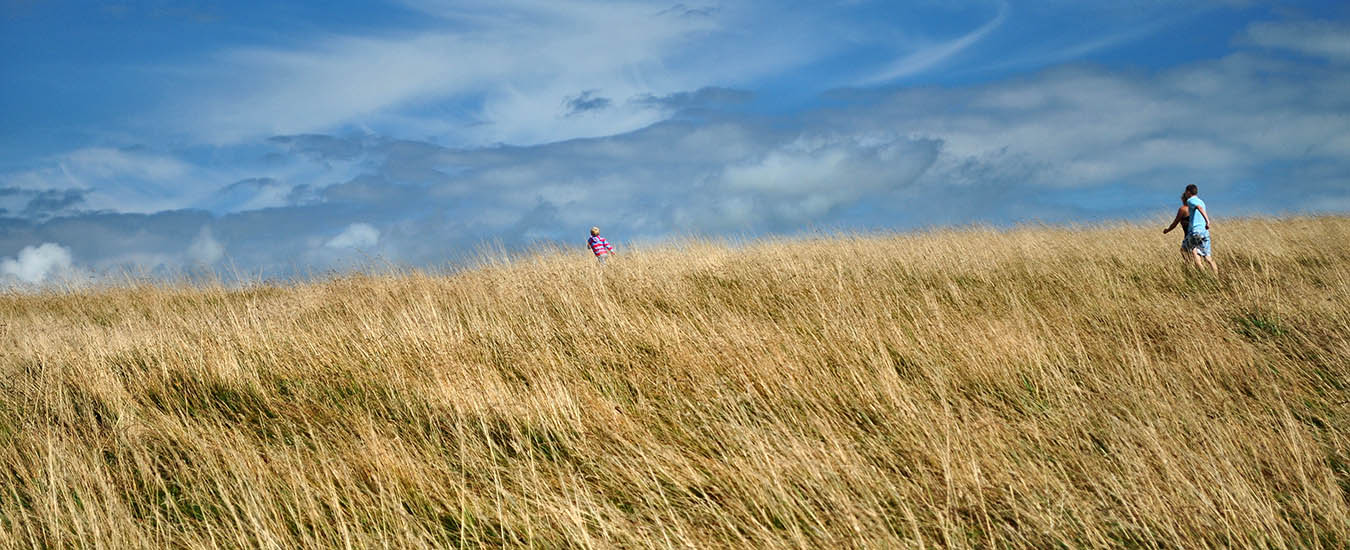Nova Scotia's Minas Basin takes the eyes and imagination on long rides.
It happened almost by accident. One lazy Sunday while reading the morning newspaper, a tiny ad for a piece of land in the small village of Cheverie, NS, caught my wife's eye. We were not looking to buy property, but decided to check it out more for a Sunday outing than for anything else. Cheverie is a picture-postcard village on the Fundy coast, in the western part of the province on the shores of the Minas Basin, with a white steeple church surrounded by salt marshes and red cliffs. The property turned out to be a dilapidated white cottage on an overgrown piece of land, but I was captivated by the magnificent view of Cape Blomidon across the Basin, rising 600 feet above sea level like a majestic guardian. We bought the property, renovated the cottage and cut the grass.
Since that Sunday, four years ago, my backyard on the shores of the Minas Basin has opened up a new world for me, a world of endlessly changing skies, tides and sea. My view is a water and sky kaleidoscope of colours and shapes that contrast sharply with the unalterable outline of Cape Blomidon.

The Minas Basin has a fascinating geology: 200-million-year-old cliffs have trapped among their layers of sandstone and volcanic basalt a prehistoric time teeming with life. The Basin is a time capsule of terrestrial history, full of ancient fossils of perfectly preserved plants, bones and dinosaur footprints.
But its current life is fascinating, too. The daily ebb and flow of gigantic tides is the heartbeat of the Basin, pumping life into one of the most biologically diverse ecosystems in the world: the salt marshes. The marshes are transition zones of land and sea created by this daily tidal nourishment, a vital link between marine and terrestrial ecosystems, and a critical component of the food chain that supports more than 220 resident and migratory bird species. From my backyard I have seen blue herons, owls, cormorants, falcons and bald eagles.
However, my favourite winged visitors are the sandpipers. They arrive by the tens of thousands in summer to gorge themselves on the mud shrimp of the Basin's flats. They are insatiable eaters, consuming an astonishing 10 to 20 thousand shrimp per 12-hour tidal cycle, doubling their body weight during a period of 10 days before starting their amazing 4,000 to 5,000 kilometre non-stop trans-oceanic migratory flight to Suriname in South America in fall. I love sandpipers because they are consummate acrobats and dancers. Thousands of birds perform a dynamic aerial ballet-they fly in beautiful, tightly choreographed formations that are like fast-moving clouds, rhythmically changing shape and alternating between black and white as the flock changes direction, revealing their white underbellies. The spectacular ballet of the sandpipers is a phenomenon of nature, a wonderful gift to the eyes and the spirit.
Cheverie was one of the communities that contributed greatly to Nova Scotia's reputation as a wooden shipbuilding powerhouse in the 19th century. The tides of the Minas Basin are ideal for launching large ships. On October 27, 1874, the William D. Lawrence, the largest full-rigged sailing ship ever built in the Maritimes was launched just along the shore, in the Minas Basin town of Maitland. This wooden marvel of Nova Scotian technology displaced 2459 tons, was 245 feet in length and had 8,000 yards of sail. Seventy-five highly skilled Nova Scotians built it in two years. It was the dream of shipbuilder William D. Lawrence of Maitland, who embodied the creativity, innovation and determination of Nova Scotians.
As I contemplate the ebb and flow of water across the tidal plain I imagine the William D. Lawrence majestically gliding from her keel-blocks to the waters of the basin tide on launch day, and I can almost hear the enthusiastic cheers of the 4,000 spectators who gathered in Maitland to see her launched.
I have lived the rhythms of the tides, marvelled at the mind-boggling feats of the sandpipers, fallen under the spell of the Golden Age of Sail and experienced the warmth and genuine friendship of people who have lived in this area for generations. The images of my backyard have not only been a source of delightful memories, but have taught me to appreciate the generous gifts of nature that often go unnoticed as we go about our busy lives.
They have inspired me and given me a sense of harmony with the universe.
Ivar Mendez is a neurosurgeon who lives in Halifax. All the photographs have been taken from the backyard of his Cheverie, NS, cottage called Oserian, which means place of peace in Swahili.
